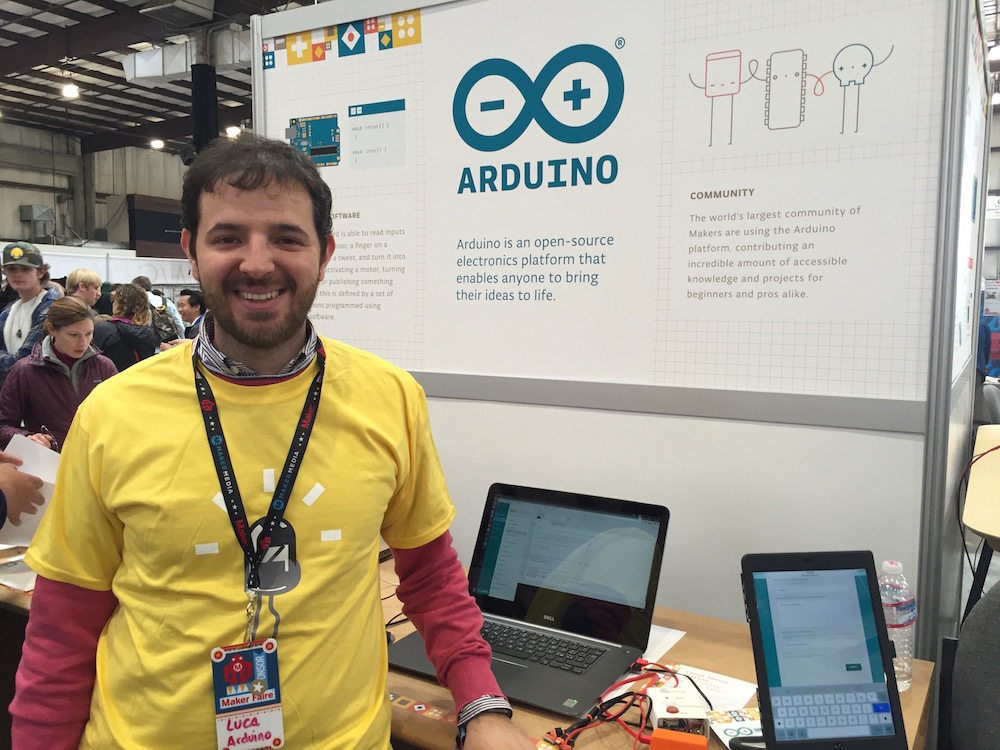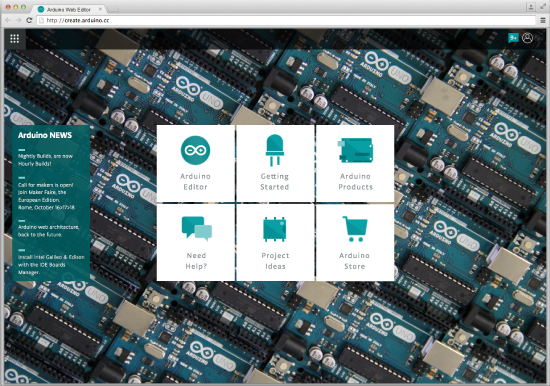Maker Faire 2016: What you need to know about Arduino Create
SAN MATEO, Calif.—The Maker movement has exploded thanks to forces like open system software and hardware and accessible, affordable components and design tools. Now, the great minds behind Arduino have just added a new item to makers’ in...
By Brian Fuller
SAN MATEO, Calif.—The Maker movement has exploded thanks to forces like open system software and hardware and accessible, affordable components and design tools. Now, the great minds behind Arduino have just added a new item to makers’ innovation tool kits, this time with an eye to driving IoT design.

At Maker Faire 2016, Arduino announced Arduino Create, an online platform that Makers can use to write code, access content, configure boards and share projects.
“It’s an all-in-one experience for makers,” Luca Cipriani, Arduino CIO (pictured, left), told me at the Arduino booth here (May 21, 2016). “It’s a complete, new platform that allows users to share their projects online, edit them directly online with a new editor and get started with the cloud.”
As more design moves into the cloud, a cloud-based design environment makes more sense, Cipriani said. And up to now, developers had to frequently switch back and forth between various tools and screens, from IDEs to cloud services.
“Our main goal is to have just one ecosystem to do everything, do your projects, share your sketches,” he added.
Users, whether they’re working on a public or private project, are able to write code and upload sketches to any Arduino board directly from their browser with the Arduino Web Editor (IDE), without having to install anything.
The user’s sketchbook will be stored on the Arduino Cloud and will be accessible from any device. The getting-started app will allow users to configure and set up tools and boards available around you.
Users also can take existing public projects and modify them for their own purposes, Cipriani said.

An excerpt from a recent Arduino blog notes:
“Despite your skill level, Arduino Create features in-depth guided flows to help easily configure online services like the Web Editor and Cloud. There’ll even be an additional learning component via Arduino’s popular Creative Technologies in the Classroom (CTC) educational program in the near future that will spark collaboration between teachers and their students.”
The web editor and cloud platform are powered by Amazon AWS. Here's a blog post from our friends at AWS with some additional details.
Related stories:
Maker Faire 2016: Accessible hardware, software drives new development
Industrial Makers? BeagleBone, Rasberry Pi and Arduino Move Towards Modules
By Brian Fuller
Re-use is only permitted for informational and non-commercial or personal use only.
